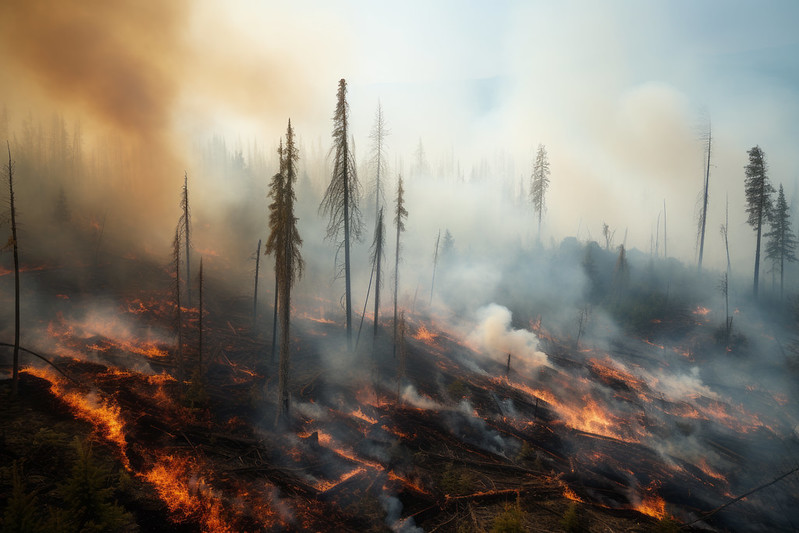Federalism, Disaster Planning Standards and Canadian Charter Rights
DOI:
https://doi.org/10.25071/pc5n3t08Abstract
Canada has a problem with emergency management (EM) standards. Canadians utilize a federalist government structure that pushes responsibility for EM planning from the federal government to provinces and territories, who then pass responsibility to municipalities (or regional counties) – who typically have less resources to engage in effective EM than higher levels of government (Raikes & McBean, 2016). In this structure, there are no set standards for levels of risk and disaster protection across the nation. The overall effect of this is the lack of protective measures and planning in place to provide the people living, working or visiting Canada to be as safe as they could be.
For the purposes of this discussion, the definition of a disaster is any hazard that overwhelms a community’s ability to respond, where the hazard has an immediate and negative effect on tangible (lives, property and the environment) and intangible (cultural practice, knowledge and psychological well-being) assets (Coppola, 2020; Mysiak et al., 2016). Public Safety Canada (2017) has numerous documents, including ‘An Emergency Framework for Canada: Third Edition,’ that suggests all levels of government and citizens of Canada are responsible to be prepared and help mitigate disasters. Pragmatically, however, not all people have the means, opportunity, or privilege to be prepared (Cox & Kim, 2018). Furthermore, is it the responsibility of private citizens and businesses to be prepared in case of a large-scale natural or human-made disaster for which they have little resources, training, and control compared to governments? Federal, provincial and territorial (FPT) governments have the ability and responsibility, both morally and ethically, to institute more concrete disaster risk reduction (DRR) standards across the nation to ensure a higher level of safety for the people in Canada. DRR is described in line with the UN’s Sendai Framework for Disaster Risk Reduction 2015–2030 (SFDRR) (2015), where disasters are mitigated through reducing existing and future risk by investing in effective policy, legislation and the recognition of areas of inequality/vulnerability in society that typically lead to an increase of negative disaster outcomes. There is a variety of ways standards could be adopted by FPT governments, such as intergovernmental agreements (IGAs) or coercive or ‘strings attached’ federal funding (Rolland, 2022). Regardless, to date no standards have been created or adopted. As Raikes and McBean (2016) note, all but one province and territory—Québec, have little or nothing in their EM legislation that attempts to reduce risk through planning and preventative measures. Most provincial/territorial legislation only state that municipalities will develop and practice a plan; there are no or few specific guidelines, rules or frameworks for what should or should not be in EM plans; only that one should exist. This paper proposes greater research into interpreting the Canadian Charter of Rights and Freedoms (CCRF or the Charter) (1982) sections on the rights to life and security for EM, where insufficient legislation may leave FPT governments open to liability unless specific DRR standards are created and upheld to protect Canadians’ rights.
References
Bosomworth, K., Owen, C. & Curnin, S. (2017). Addressing challenges for future strategic-level emergency management: reframing, networking, and capacity-building. Disasters, 41(2), 306–323.
Canadian Charter of Rights and Freedoms, s 7, Part 1 of the Constitution Act, 1982, being Schedule B to the Canada Act 1982 (UK), 1982, c 11.
Civil Protection Act. CQLR, s-2.3 (2001). https://www.legisquebec.gouv.qc.ca/en/document/cs/s-2.3#:~:text=This%20document%20has%20official%20status.&text=1.,disaster%20situations%20and%20recovery%20operations.
Coppola, D. P. (2020). Introduction to International Disaster Management (Fourth edition). Elsevier Science & Technology.
Cox, K., & Kim, B. (2018). Race and income disparities in disaster preparedness in old age. Journal of Gerontological Social Work, 61(7), 719–734.
Government of Canada. (2022, March 14). Section 7 – Life, liberty and security of the person. https://www.justice.gc.ca/eng/csj-sjc/rfc-dlc/ccrf-ccdl/check/art7.html.
Llosa, S. & Zodrow, I. (2011). Disaster risk reduction legislation as a basis for effective adaptation. Global Assessment Report on Disaster Risk Reduction. https://www.preventionweb.net/english/hyogo/gar/2011/en/bgdocs/Llosa_%26_Zodrow_2011.pdf.
Mysiak, J., Aerts, J., & Surminski, S. (2016). Comments on the Open-ended Intergovernmental Expert Working Group Indicators and Terminology Relating to Disaster Risk Reduction. Enhance: Partnership for Risk Reduction. https://www.researchgate.net/profile/Cedric-Hananel/publication/308991479_ENHANCE_Comments_on_the_Open-ended_Intergovernmental_Expert_Working_Group_Indicators_and_Terminology_Relating_to_Disaster_Risk_Reduction/links/57fcf62b08aeb857afa0bb1a/ENHANCE-Comments-on-the-Open-ended-Intergovernmental-Expert-Working-Group-Indicators-and-Terminology-Relating-to-Disaster-Risk-Reduction.pdf.
Nelson v. Marchi, 2021 SCC 41.
Public Safety Canada (2017). An Emergency Management Framework for Canada, Third Edition. https://www.publicsafety.gc.ca/cnt/rsrcs/pblctns/2017-mrgnc-mngmnt-frmwrk/2017-mrgnc-mngmnt-frmwrk-en.pdf.
Public Safety Canada (2022). Emergency Management Strategy for Canada: Toward a Resilient 2030. https://www.publicsafety.gc.ca/cnt/rsrcs/pblctns/mrgncy-mngmnt-strtgy/index-en.aspx.
Raikes, J., & McBean, G. (2016). Responsibility and liability in emergency management to natural disasters: A Canadian example. International Journal of Disaster Risk Reduction, 16, 12–18.
Raikes, J., Smith, T. F., Baldwin, C. & Henstra, D. (2021). Linking disaster risk reduction and human development. Climate Risk Management, 32, 100291.
Rankin, W. D. & Williams, D. (2021, November 15). Supreme Court of Canada revisits the law of government liability in negligence. Osler. https://www.osler.com/en/resources/regulations/2021/supreme-court-of-canada-revisits-the-law-of-government-liability-in-negligence.
Rolland, K. M. (2022, October 21). Federalism and the creation of “national standards” for long-term care. The Canadian Bar Association. https://www.cba.org/Sections/Public-Sector-Lawyers/Articles/2022/Federalism-and-the-creation-of-National-Standards.
Schnabel, J. & Dardanelli, P. (2022). Helping hand or centralizing tool? The politics of conditional grants in Australia, Canada, and the United States. Governance. 1–21.
Sendai framework for disaster risk reduction 2015–2030. (2015). UN world conference on disaster risk reduction, 2015. http://www.wcdrr.org/uploads/Sendai_Framework_for_Disaster_Risk_Reduction_2015-2030.pdf.
Stacey, J. (2018, July 16). Vulnerability, Canadian disaster law, and The Beast. Alberta Law Review, 55(4), 853–888.

